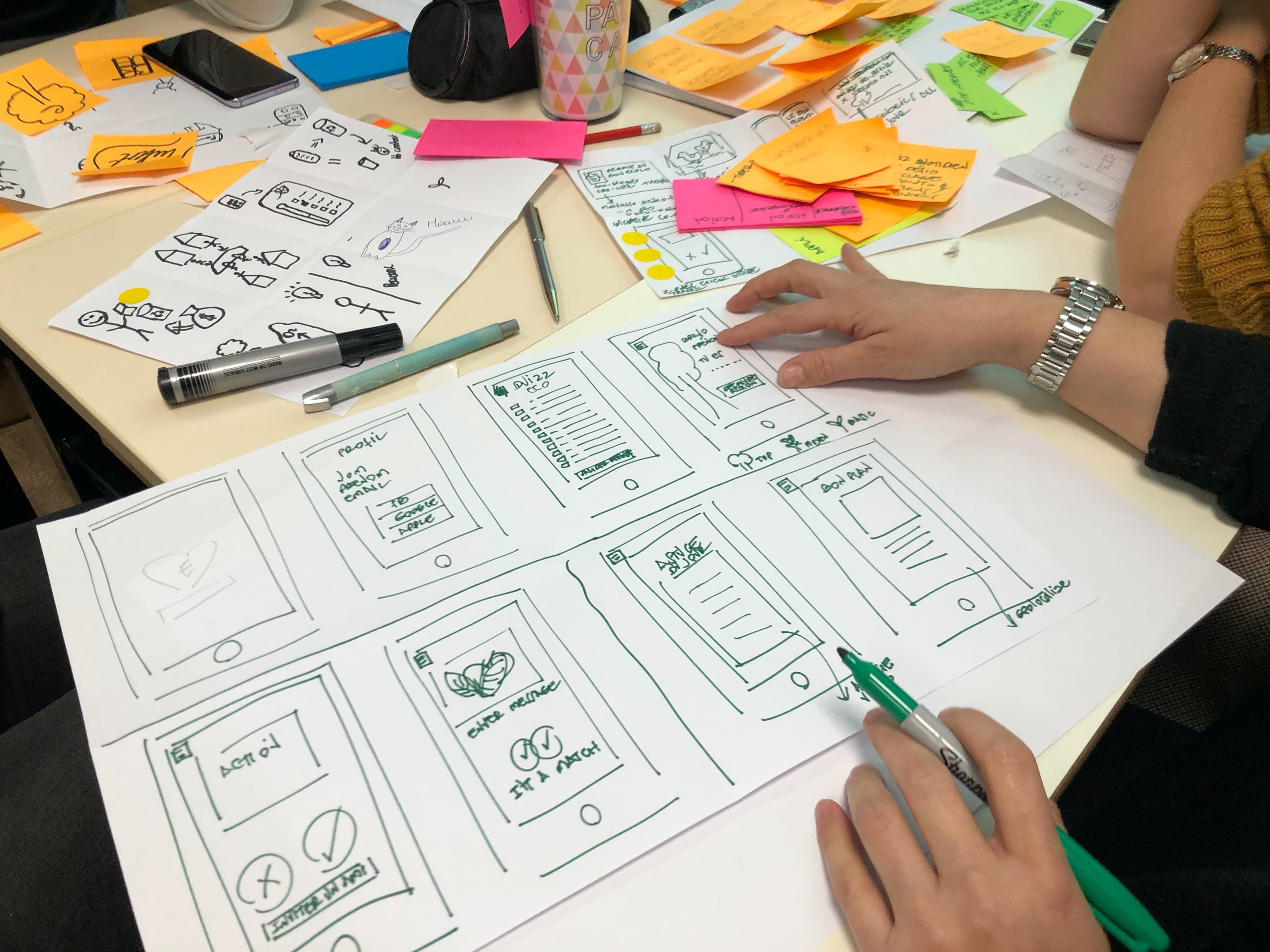Strategy & Advisory
Solving real-life problems: Creating solutions instead of products with Design Thinking

Philip Farbmacher
Founder & CEO
Published
June 27th, 2023
Updated
June 27th, 2023
5 min

There are thousands of products in the market that the world doesn't need. They are created from an individual's perspective, only to realize that there is actually no target audience for them. Design Thinking addresses this issue directly. This approach always focuses on the individual and their problem. Our CEO, Philip, has been involved with Design Thinking since his studies at Imperial College London. He discovered that this method has long been established in England and America but is relatively underutilized by companies in Austria. At Momentum, we see ourselves as Design Thinkers and would like to provide you with an insight into our daily business. Perhaps we can also solve a problem in your company with Design Thinking.
What is Design Thinking?
Let's start with the most challenging question, of course. And it's actually not easy to answer. Because there is no official definition of Design Thinking yet. However, Design Thinking is an approach, a systemic methodology that combines various methods, techniques, and principles to solve complex problems. The special aspect is the perspective. Instead of approaching a problem based on technical feasibility, Design Thinkers always view it through the lens of the end-users. This means we engage with our target audience, put ourselves in their shoes, try to understand their desires, and find a creative, innovative solution to their problem. It is essential for the users to be involved closely throughout the entire process.
What are the advantages?
Firstly, innovation is not based on mere intuition. By focusing on better understanding the people for whom we are designing, we can ensure that we create genuine problem solvers. We are less likely to develop something that misses the target audience. Additionally, in Design Thinking, we follow a specific work process in which end-users and extensive testing play crucial roles. This allows us to present practical results to customers without significant investments. But more on the process later.
Multidisciplinary teams are also key success factors in Design Thinking. People from different disciplines work together to incorporate as many perspectives as possible. Regardless of their field or background, Design Thinkers are creative, open-minded, and curious—essentially, the foundation of a creative work culture.
The Design Thinking Process
In general, the Design Thinking process follows a workflow that designers or architects would intuitively follow. The teams go through six phases that occur in iterative loops, constantly optimizing and developing each step toward the desired goal.
#1 Empathize: In this phase, we define the problem space and determine for whom we need to find a solution. We closely examine our target audience, try to put ourselves in their shoes, and build empathy.
#2 Define: Now we gather all the insights we collected in the first step. Ideally, we can precisely define our position as well as the problem.
#3 Ideate: In this phase, we unleash our creativity. Using various methods such as brainstorming or Crazy 8, we generate as many ideas as possible for problem-solving. The rule is: no idea is too crazy. Only after exploring all possibilities do we refocus and select the best proposal.
#4 Prototype: From that idea, we create a prototype. This has the significant advantage of making our solution tangible for the end-users.
#5 Test: Now comes the crucial phase. We test the prototype and gather feedback from the target audience. This way, we determine if an idea can work without investing substantial sums in full development. Naturally, it can happen that the idea doesn't work as intended, and we need to work on an alternative. That's part of the process. Therefore, Design Thinkers often follow the insight of IDEO founder David Kelley: "Fail faster to succeed sooner."
In this case, the feedback serves as the basis for the next phase. As mentioned at the beginning, the Design Thinking process is not rigid but instead progresses in iterative loops until the best solution for the problem is found.
#6 Deliver: This final step is not officially part of the Design Thinking process. However, it is essential for us to implement the solution within our clients' organizations once we have found it. This means developing a finished product from the prototype and implementing it in the company.
However, this doesn't mean that we're finished. In essence, the Design Thinking process is infinite because, in our view, the resulting product can and should always be further developed.
From Theory to Practice: How Airbnb Cleverly Uses Design Thinking
So, what does this look like in practice? Airbnb provides a perfect and simple example of a successful Design Thinking process. As a platform for booking private and commercial accommodations, Airbnb has two goals:
#1 To have various hosts offer their accommodations.
#2 To ensure that people actually choose these accommodations.
However, when Airbnb realized that the second goal was not being achieved, they visited all the listings in New York and spoke with the hosts. Through this process, they discovered that the poor quality of the photos was the reason for the decline in bookings. They took better photos of the accommodations, and the booking numbers increased again. So, what did Airbnb do? They placed the users at the center of the problem-solving process, empathized with them, engaged in conversations, and collectively searched for solutions until they found one that satisfied all parties involved.
Conclusion: What is the goal of Design Thinking, and in which areas do we apply it?
The goal of the Design Thinking process is to find an innovative and creative solution to a complex problem. This solution not only satisfies the needs of the users, but it is also economically and technically feasible. The scope of application for this approach is vast. Whether it's a new physical product, a specific service, or even important societal issues, Design Thinkers know no boundaries. If you find Design Thinking fascinating and want to know if and how your company can benefit from this method, we offer a free Design Thinking introduction. Click here for our freebies – inquire now!
Insights
Related Articles

Strategy & Advisory
eco.nova: Digital Solutions for Digital Thinkers

Strategy & Advisory